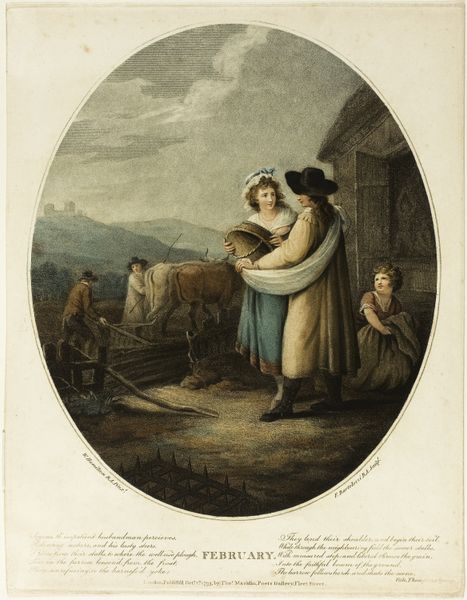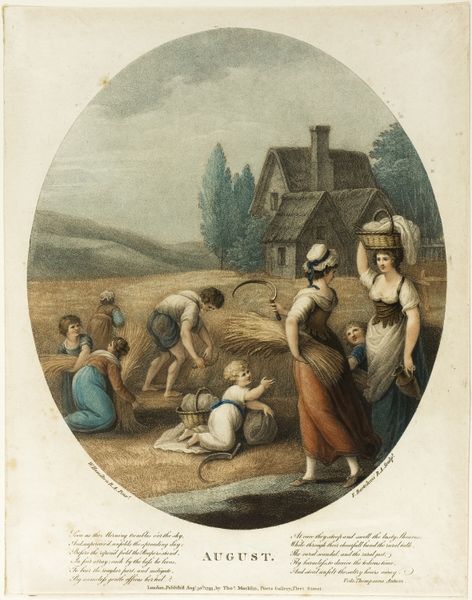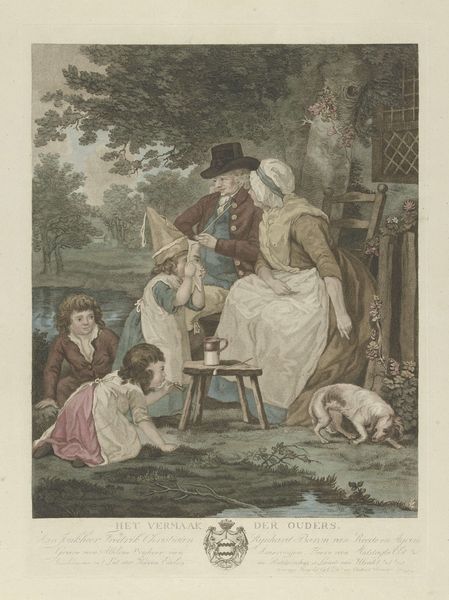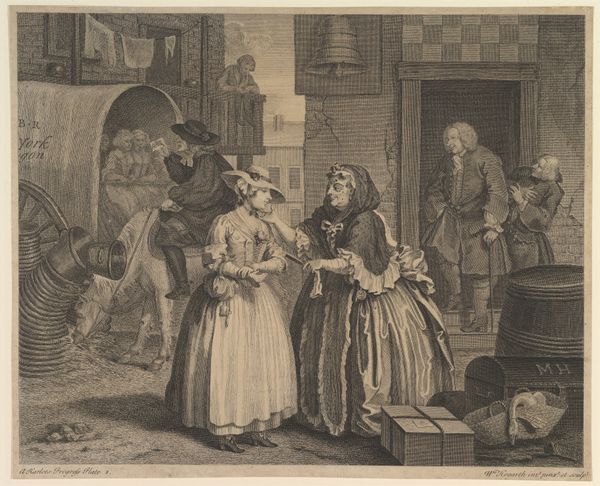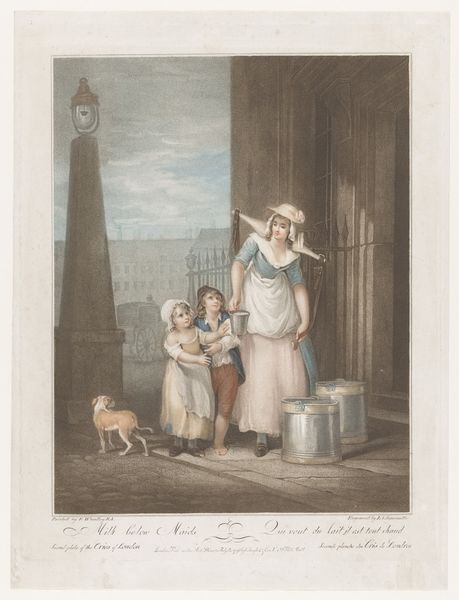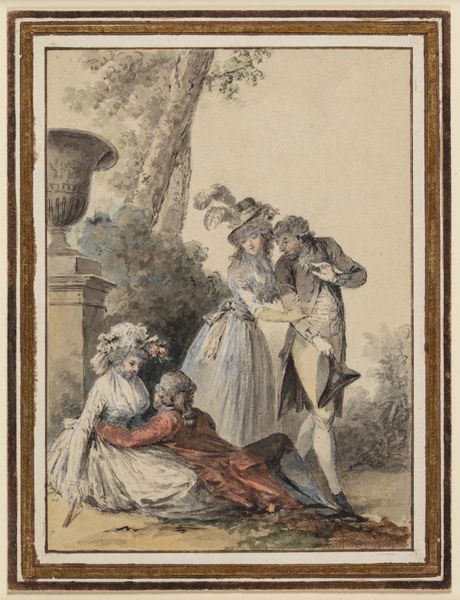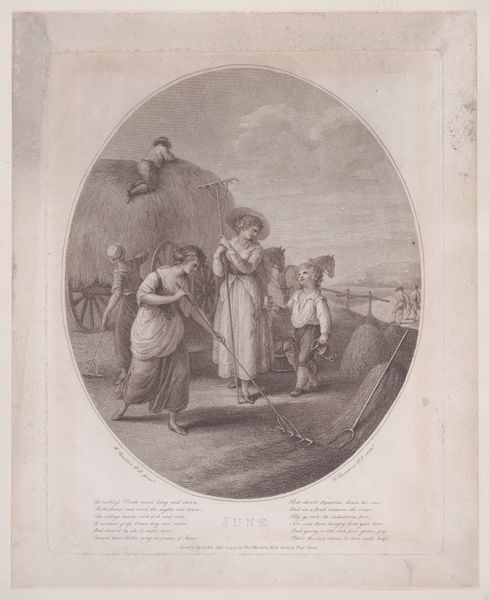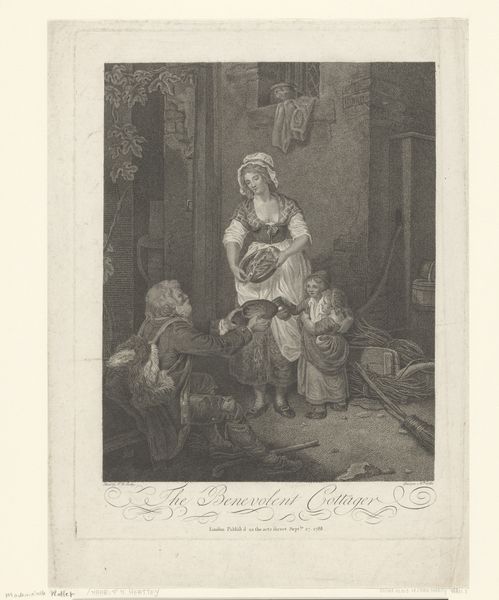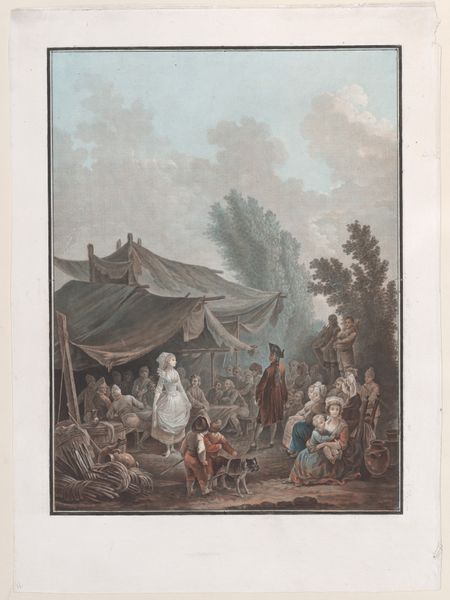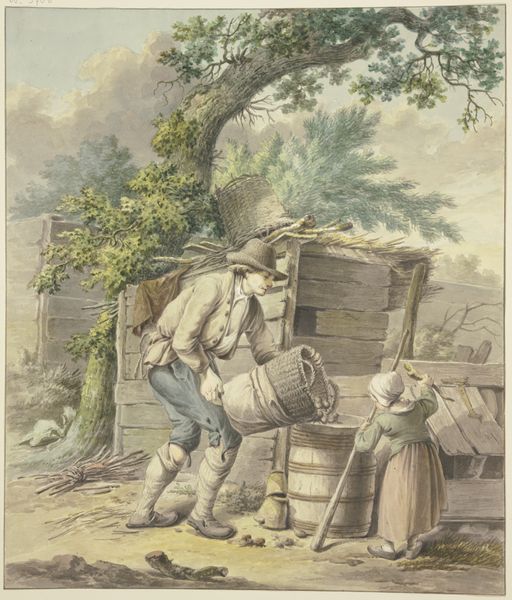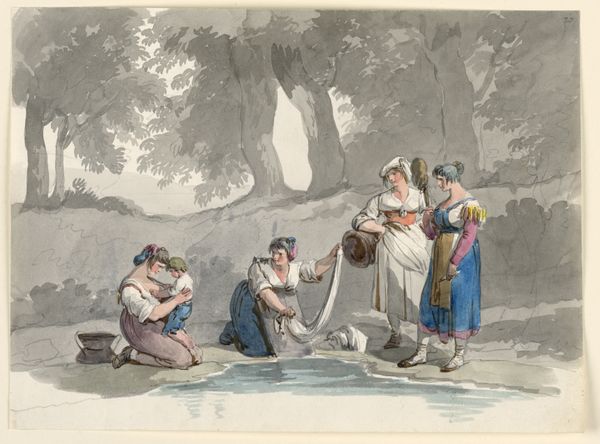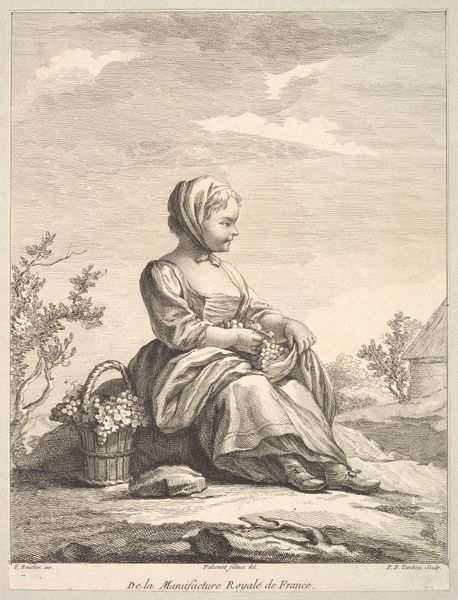
drawing, print, paper, engraving
#
drawing
# print
#
sculpture
#
landscape
#
paper
#
romanticism
#
genre-painting
#
engraving
Dimensions: 304 × 253 mm (image); 353 × 277 mm (sheet)
Copyright: Public Domain
Curator: The scene is so tranquil, almost idyllic. Look at the women tending to the chickens; it suggests such a harmonious relationship with nature. Editor: Harmony perhaps, but there is a powerful image of a male laborer swinging a club, obscured deep inside the barn. Don't you feel like it subverts the pleasantries depicted around it, hinting at social stratifications within these rustic scenes? Curator: It’s easy to overlook, isn’t it? This is “March”, an engraving from 1793 after William Hamilton, printed by Francesco Bartolozzi. It appears on paper using engraving techniques, as a print for mass distribution. Notice its carefully constructed imagery; an almost idealized version of country life, but, to your point, with undercurrents. Editor: Bartolozzi presents this "genre-painting," for a buying public who often enjoyed sentimental, visually comfortable narratives. Even with the inclusion of common farm activities, the scene comes across a bit curated. How much does the reality align with such gentle representation? Curator: The choice of “March” itself feels symbolically potent, signaling the promise of springtime, new life, and by extension, perhaps societal renewal. Editor: Yes, but how much does that renewal extend to the laboring figures we see tucked away at the margins? Are their realities as idyllic as the gentle chicken-feeding activities taking place closer to us, or does this carefully constructed composition serve primarily as escapism? Curator: Certainly. The details—the clothing of the women, the very placement of the chicken coop—they all add to a romanticized vision of rural life that may not fully reflect reality, it represents stability and hope but for whom, it prompts the question. Editor: Precisely! An interesting tableau to contemplate, and to unravel which values the work represents, how it might conceal socio-economic divisions to give a comforting, accessible glimpse into rural life for the viewer of the time. Curator: Agreed; and how art shapes collective memories of rural existence in broader society too.
Comments
No comments
Be the first to comment and join the conversation on the ultimate creative platform.
